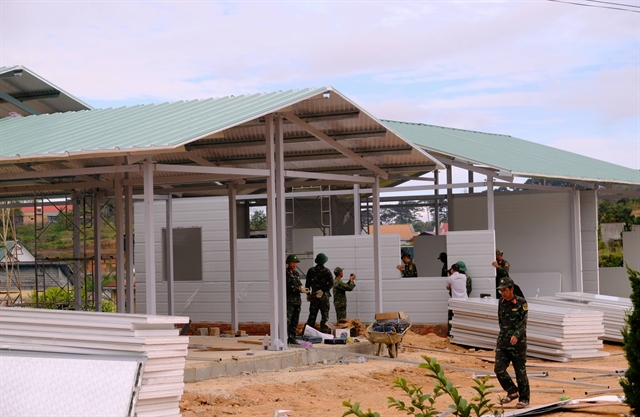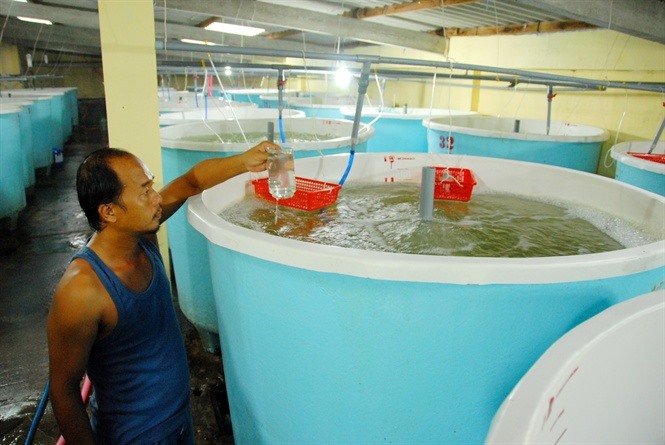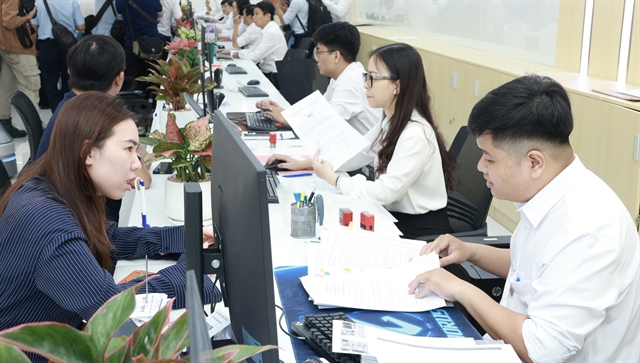 Society
Society

Although Việt Nam’s shrimp production has potentials to become the country’s spearhead economy with predicted export turnover reaching US$10 billion by 2025, the sector is facing challenges of small-scale production and limitation in shrimp breeding stocks, said Trần Đình Luân, deputy head of Directorate of Fisheries under Ministry of Agriculture and Rural Development.
 |
| More than 90 per cent of breeding stock of white-leg shrimps in Việt Nam are imported, while the breed for prawns depends on natural catching. — Photo nongnghiep.vn |
HÀ NỘI — Although Việt Nam’s shrimp production has the potential to become the country’s spearhead economy, the sector is facing small-scale production challenges and shrimp breeding stock limitation, said Trần Đình Luân, deputy head of Directorate of Fisheries under Ministry of Agriculture and Rural Development.
Among 1,800 shrimp breeding stock production bases nationwide, quite a few fail to meet quality and biological safety criteria, the result of poor breeding stock quality management, Luân said.
More than 90 per cent of breeding stock of white-leg shrimps in Việt Nam are imported, while the breed for prawns depends on natural catching, he said.
Sharing the same view, Lê Anh Xuân, president of the board of directors of NG Việt Nam Fishery Company, said that Việt Nam’s shrimp breeding stock production bases are enough in terms of quantity but lack quality, which seriously affects shrimp sector development.
Shrimp breeding technology and infrastructure bases remain weak and incomprehensive, limiting the capacity to produce high-quality shrimp stock that meet biological requirements and at a large production scale. The shrimp quality and prices in the market are uneven, he said.
He said that State agencies must step up unscheduled inspections on shrimp breeding stock production bases and categorise these bases following three levels - A, B and C, so that consumers can be aware of shrimp quality.
Farmers should buy stock from prestigious shrimp production bases and keep monitoring stock quality while raising shrimp, he said.
Trần Đình Luân said the challenge is that small scale shrimp farming households lack access to high quality breeding stock production bases. The breed is transferred from factory to two to three intermediary dealers before being provided to farmers.
Luân said that to help farmers access high quality shrimp breeding stock and reduce costs for breeders, it is necessary to organise co-operatives which connect with quality shrimp breeding stock selection agencies.
Promoting domestic production of shrimp breeding stock is very important along with application of science technology and industrialised production, Xuân said.
According to the Ministry of Agriculture and Rural Development, Việt Nam’s shrimp production ranks the third in the world, with total annual output of 600,000 to 650,000 tonnes.
Việt Nam is the world’s leading prawn exporter and the provider to big markets such as Japan, the US and European Union. Shrimp export turnover is expected to reach US$10 billion by 2025. — VNS




